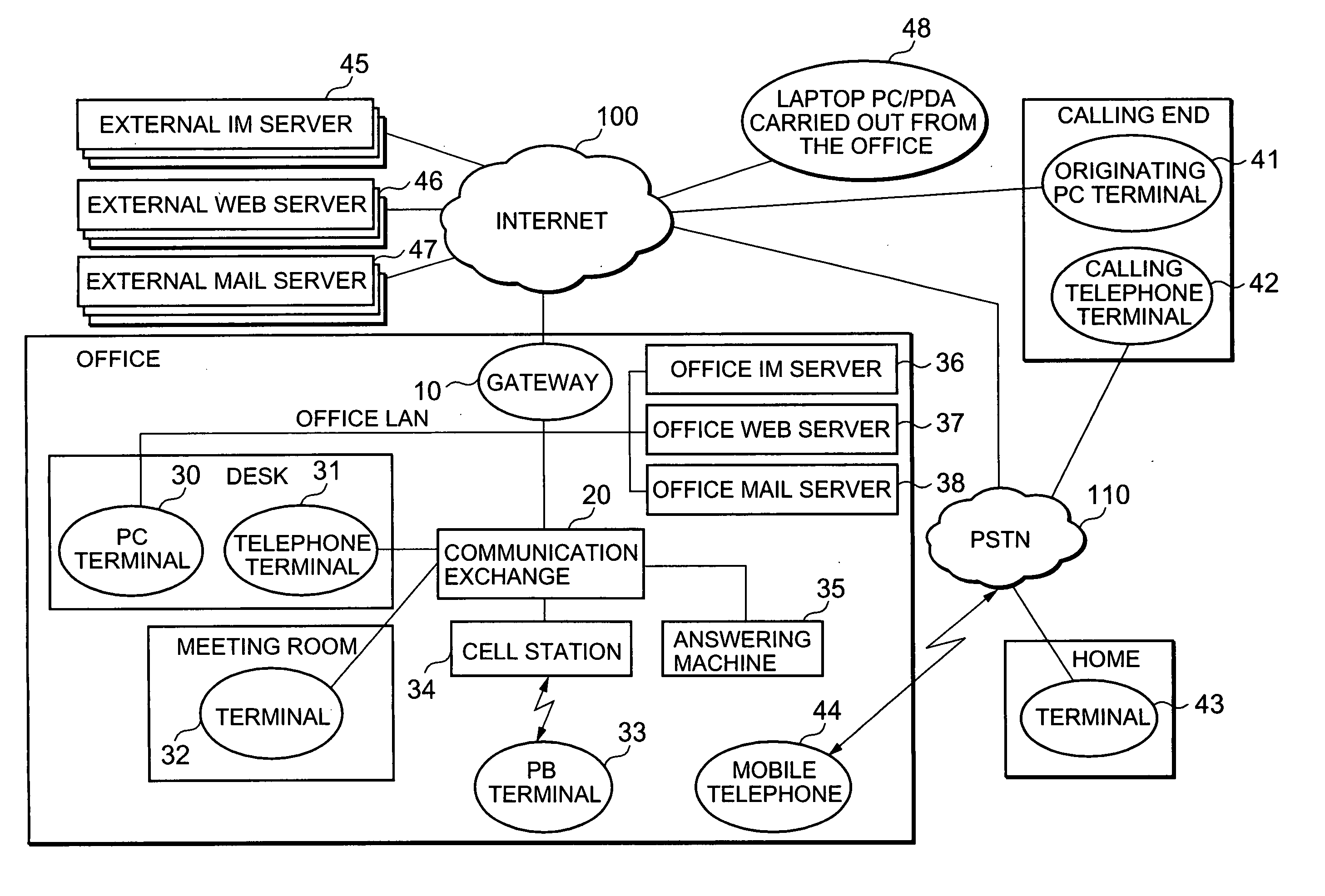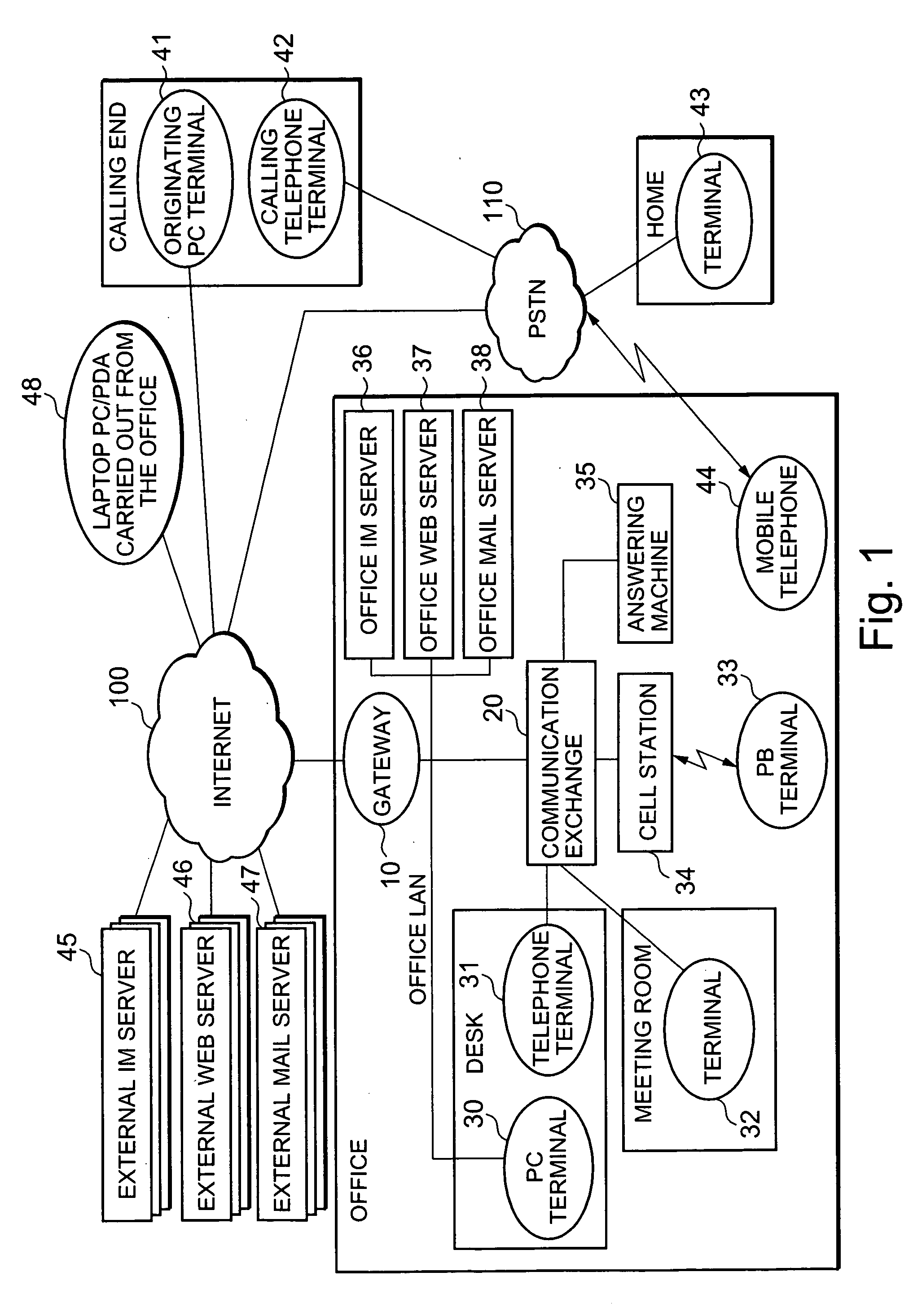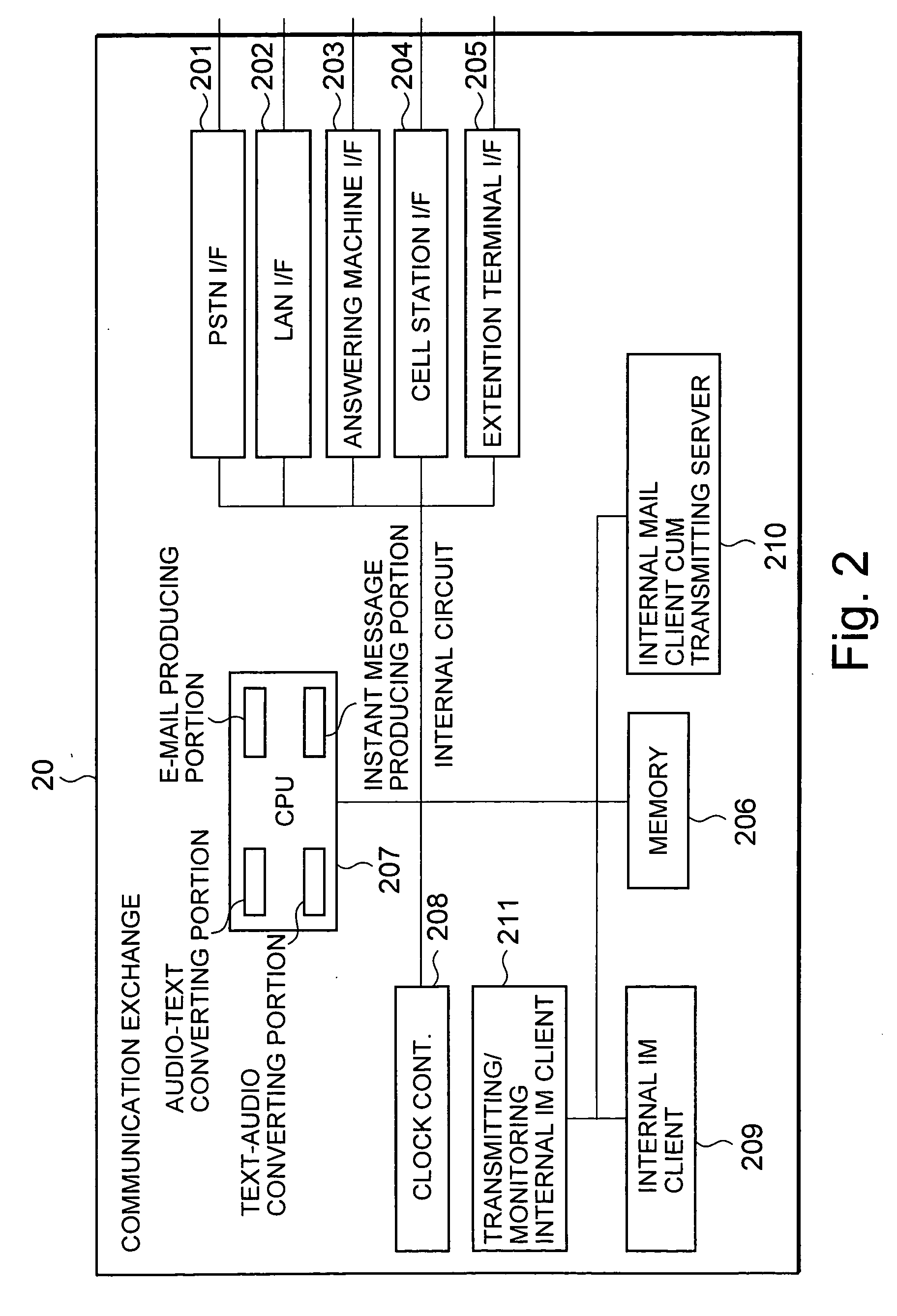Communication exchanging system capable of changing forwarding destination according to notification of presence change of user
- Summary
- Abstract
- Description
- Claims
- Application Information
AI Technical Summary
Problems solved by technology
Method used
Image
Examples
example 1
[0071] Referring to FIG. 7 in addition to FIGS. 1 to 6, the operation of a case where a telephone call for the user's desk telephone terminal 31 is forwarded to the other telephone terminal is described below.
[0072] When the calling telephone terminal 42 generates a telephone call for the user's desk telephone terminal 31, the PSTN interface 201 of the exchanger 20 detects the telephone call through the PSTN 110 (Step C1). The CPU 207 of the exchanger 20 reads out the presence state of the (destination) user related to the user's desk telephone terminal 31 from the column 602 of the presence state table (FIG. 6) in the memory 206. The CPU 207 further reads out the forwarding destination information corresponding to the presence state read out from the columns 402-404 of the forwarding destination table (FIG. 4) corresponding to the user (Step C2). The CPU 207 decides whether the forwarding destination information is registered in the corresponding cell of the column 402 (Step C3). ...
example 2
[0074] Though the forwarding source (or calling terminal) and the forwarding destination are telephone (using audio) in the example 1, they may be other communication means such as the E-mail, the instant message or the like.
[0075] If the E-mail address or the IM address is set as the forwarding destination information in a case where the user is in conference, the conference can be prevented being interrupted with the telephone call. Moreover, if a mail address of the mobile phone 44 is set as the forwarding destination information, the user can know immediately arrival and contents of the E-mail or the instant message for the user's desk PC terminal 30.
[0076] To realize the forwarding operation as mentioned above, the CPU 207 of the exchanger 20 refers to the column 402 of the forwarding destination table for the corresponding user and confirms registration of the forwarding destination information whenever the contents of the presence state table (FIG. 6) is changed.
[0077] If ...
example 3
[0088] There is a case where the user can not respond to the forwarding call forwarded as mentioned in Example 1. In such a case, the exchanger 20 may executes a call back operation when it detects change of the presence state of the corresponding user.
[0089] The exchanger 20 operates as illustrated in FIG. 8 to execute the call back operation. The steps G1 to G4 of FIG. 8 are similar to the steps C1 to C4 of FIG. 7.
[0090] In the step G4, the moment the exchanger 20 forwards the call, it starts counting elapsed time. When the forwarding side terminal responds to the forwarding call during a predetermined time period, the exchanger 20 connects the forwarding side terminal (e.g. the mobile phone 44) with the calling telephone terminal 42 as mentioned in relation to the Example 1. After that, the exchanger 20 decides that the forwarding side responded (Yes in Step G5), and finishes the forwarding operation.
[0091] On the other hand, when the forwarding side terminal does not respond ...
PUM
 Login to View More
Login to View More Abstract
Description
Claims
Application Information
 Login to View More
Login to View More - R&D Engineer
- R&D Manager
- IP Professional
- Industry Leading Data Capabilities
- Powerful AI technology
- Patent DNA Extraction
Browse by: Latest US Patents, China's latest patents, Technical Efficacy Thesaurus, Application Domain, Technology Topic, Popular Technical Reports.
© 2024 PatSnap. All rights reserved.Legal|Privacy policy|Modern Slavery Act Transparency Statement|Sitemap|About US| Contact US: help@patsnap.com










